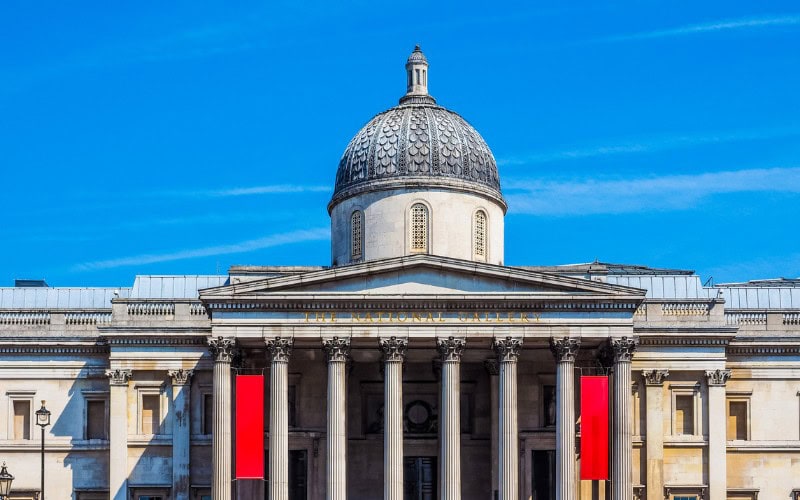What to See at London’s National Gallery: The Best of the Best
Artsy Traveler contains affiliate links for products and services I personally use and can happily recommend. As an Amazon Associate, I earn from qualifying purchases. Please read the Disclosure for more information. If you make a purchase through these links, at no additional cost to you, Artsy Traveler earns a small commission. Thank you!
If you love art and you’re London-bound, than you must visit the National Gallery.
I love this place and pop in every chance I get. The National Gallery in London is small enough to enjoy in a few hours without getting exhausted (unlike the Louvre in Paris), and yet big enough to include an astonishing collection of masterpieces from the Middle Ages to the Impressionists.
Also, London’s National Gallery is free, which is amazing considering that every other major art museum in Europe charges at least 20 to 30 Euros.
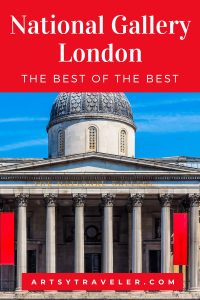
Five Favorites at a Glance
Here are my top five favorites pieces at the National Gallery (and it was a tough choice)!
- A Group of Four Poor Clares by Ambrogio Lorenzetti
- Venus and Mars by Sandro Botticellli
- A Boy and A Girl with a Cat and an Eel by Judith Leyster
- The Fighting Temeraire by William Turner
- Bathers at Asnières by Georges Seurat
Overview
On my latest trip to London, I dropped by the National Gallery fairly late in the day and so only had an hour to spend before it closed. An hour is not enough, but if it’s all you have, you won’t be disappointed.
I wandered in a trance from room to room, eyes tearing up as every turn brought so many favorites before me. The National Gallery includes an impressive number of western art’s biggest biggies.
In this post, I showcase what I consider the must-see paintings at the National Gallery–the best of the best if you will.
Note that I’ve downloaded images from the National Gallery’s website, which allows display of its images for personal use, including blogs. I was glad to discover this because my own photographs are sometimes a bit crooked and ill-lit! Thank you, National Gallery.
Medieval Period at the National Gallery
The National Gallery’s medieval collection includes pieces by most of the major painters, including Giotto, Duccio, Lorenzetti, and Lippi.
One of the reasons why I love medieval Italian painting is because of how the artists depicted buildings. While perspective is generally lacking, the artists of this period captured the essence of medieval towns as a hodgepodge of arches and towers built at varying angles and heights.
The arrangements communicate the feeling of a medieval town, rather than just a realistic representation, that still rings true today when you visit places like Siena and San Gimignano in Tuscany.
The Healing of the Man Born Blind by Duccio
I chose this painting because of how Duccio di Buoninsegna depicted the buildings behind the people. I love how the pastel colors of the buildings in the background contrast with the more vibrant robes of the central figures.
This painting is a small panel–one of 54 minutely detailed narrative scenes that was included in Duccio’s Maestà.
A massive work, Maestà is considered one of the most ambitious altarpieces ever created. Most of the rest of the altarpiece is on display in the Museo dell’opera del Duomo in Siena.
Read about it in my post about top cathedrals in Europe in which I include Siena Cathedral adjacent to the Museo. If you’re in Siena, the Museo dell’opera del Duomo (the museum of the cathedral) is a must-see.
When the Maestà was completed in 1311, it was carried through the streets of Siena. One of the characters in my novel The Towers of Tuscany reminiscences about seeing the procession when she was a young girl.
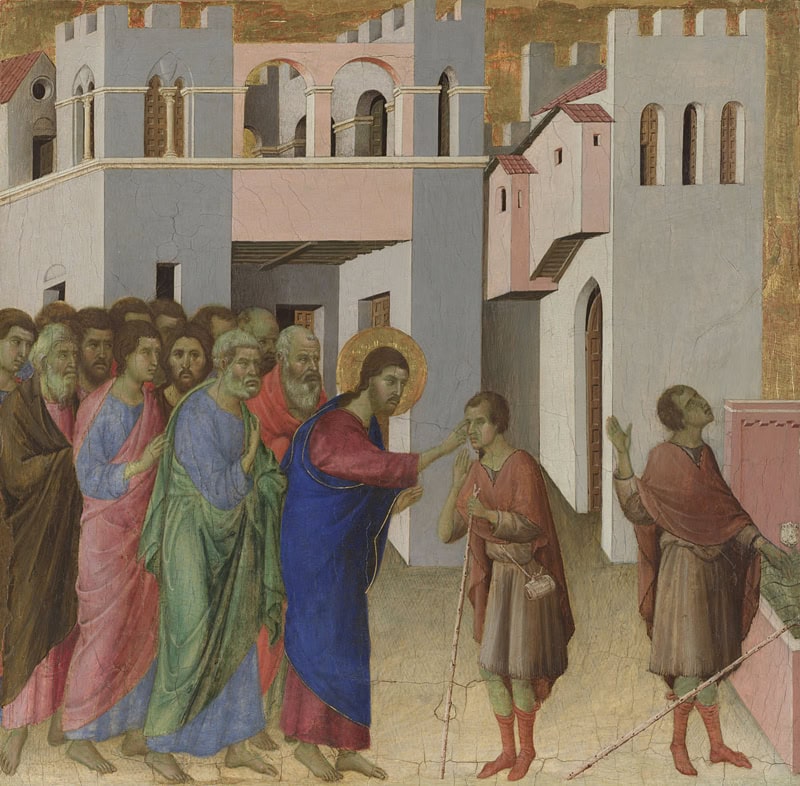
A Group of Four Poor Clares by Ambrogio Lorenzetti
Lorenzetti was active in Siena during the 1300s and likely died of the plague that hit Siena in 1348. I really like his work and so was delighted to discover this piece in the National Gallery.
It’s a fragment of a fresco that was discovered under whitewash in 1855. I love the realism of the faces and their pensive expressions.
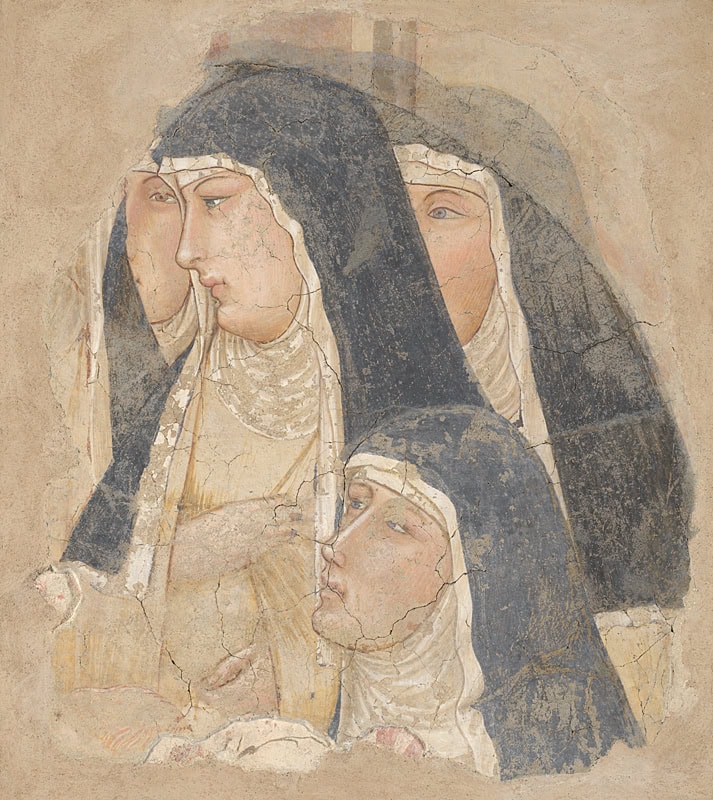
Italian Renaissance at the National Gallery
So many masterpieces, so little time! Take your time when you get to the rooms containing some of the world’s most famous artists from the Italian Renaissance, most notably Leonardo da Vinci and Botticelli. Have a seat and soak up the Renaissance vibe.
The Burlington House Cartoon by Leonardo da Vinci
I remember the first time I saw this piece when I was student at Reading University in the 1970s. Reading was only 40 minutes by train from London so I often went up to enjoy the art museums.
The Burlington House Cartoon is a large drawing made in preparation for a painting and is the only surviving large-scale drawing done by da Vinci.
I like the contrast of rough and finished in the drawing. Some parts, such as the face of Mary, are beautifully detailed and evocative while others, such as the hand of Saint Anne (Mary’s mother) pointing heavenward, are barely sketched in.
Exhibited in a small, dimly lit room, the piece just glows.
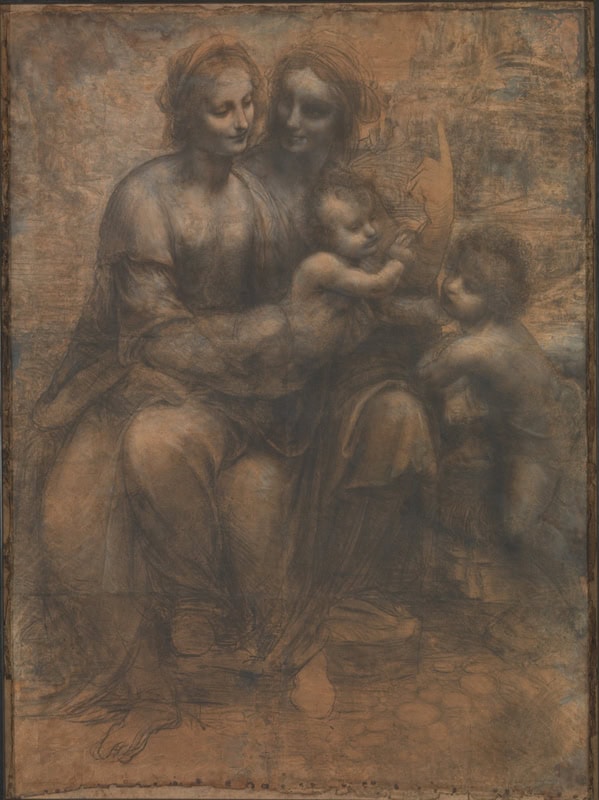
Virgin of the Rocks by Leonardo daVinci
This beautiful painting is one of the most famous in the National Gallery, and a rare example of one of da Vinci’s large-scale paintings.
The techniques he used were ground-breaking at the time, but I think the enduring appeal of the work is because of the expression on the Virgin Mary’s face.
She looks a bit careworn and tired–the image of a mother responsible for the children in her care. Her outstretched hand almost seems to come out of the painting to calm a fretful child.
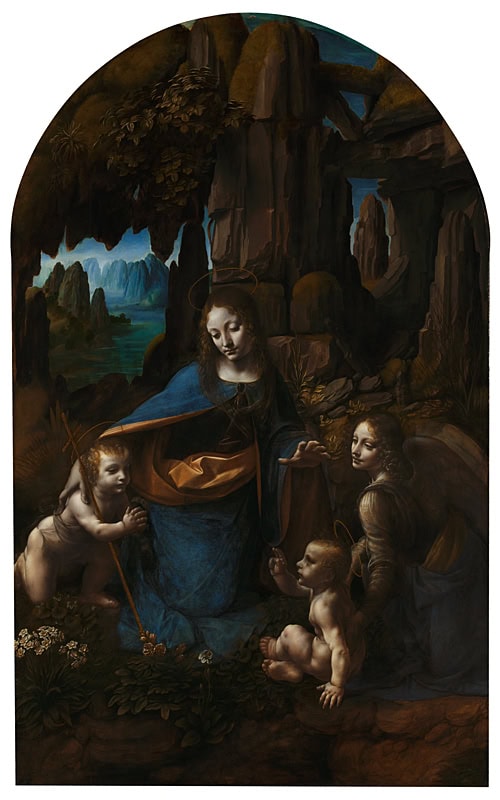
Venus and Mars by Sandro Botticelli
I’ve been a fan of Botticelli’s work since discovering it while taking a first-year History of Art course in 1974.
I’d forgotten that Venus and Mars–one of Botticelli’s most famous paintings–is in the National Gallery, and gasped out loud when I entered the roomful of Botticellis. Fortunately, no one noticed.
There’s so much to love about this painting! The look on Venus’s face as she coolly regards the blissed- out Mars is priceless. She’s clearly not all that impressed!
And then there are the four mischievious nymphs trying to wake up Mars. One of them is even wearing his helmet.
Enjoying this post? Subscribe to Artsy Traveler to Receive Valuable Travel Tips and Your FREE Guide: 25 Must-Do Artsy Traveler Experiences in Europe for 2025
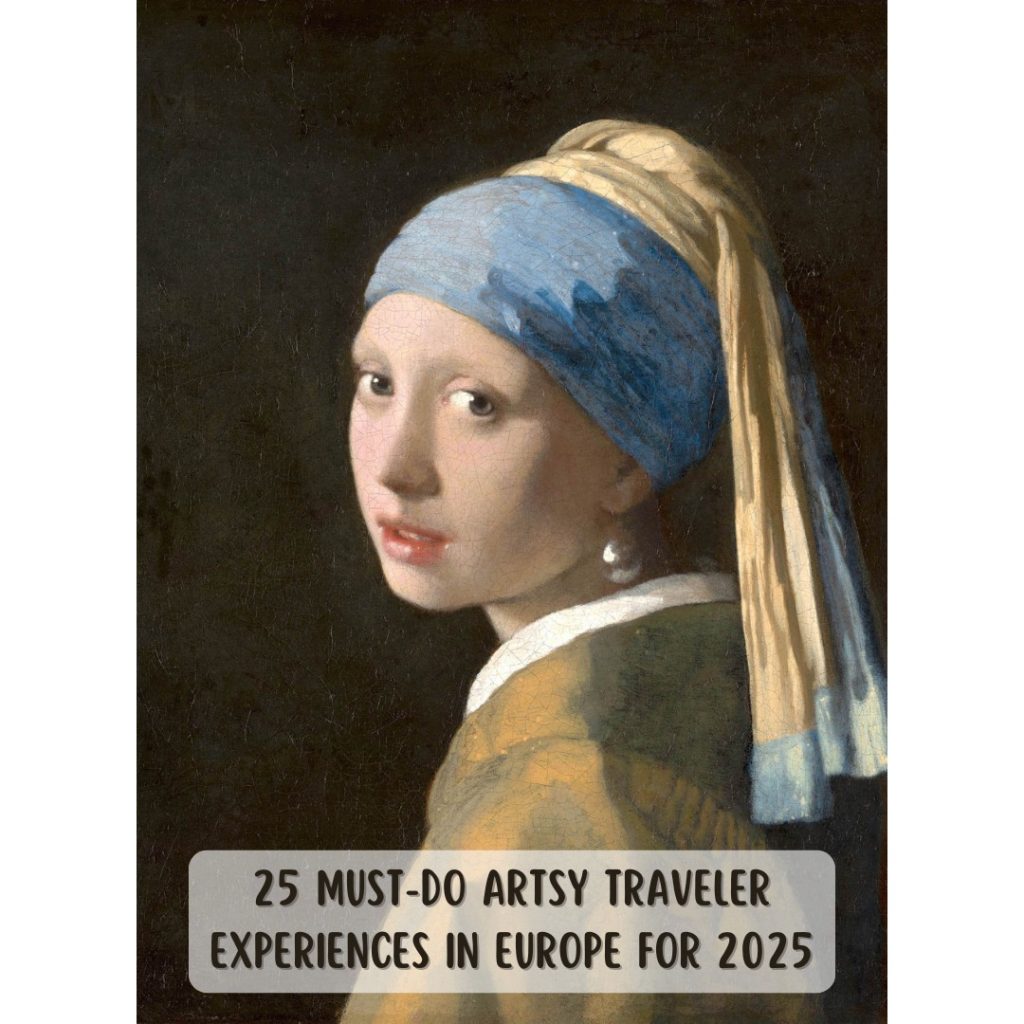
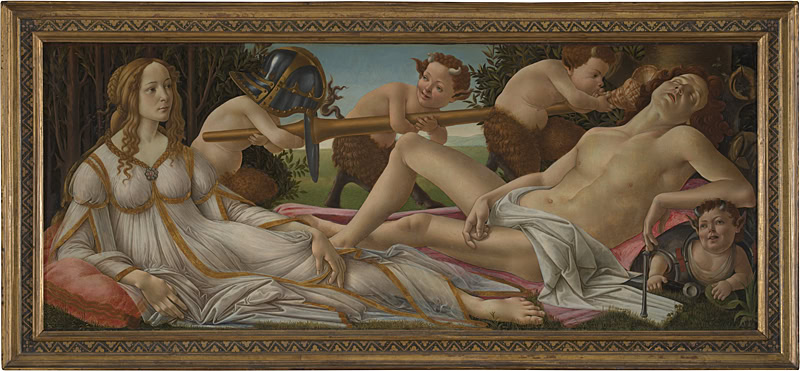
Flemish Masterpieces at the National Gallery
The National Gallery is particularly well endowed with masterpieces from the northern Renaissance. You’ll find several pieces by Rembrandt, two gems by Vermeer, and a famous van Dyck, among many others.
The Arnolfini Portrait by Jan van Eyck
This portrait of Italian merchant Giovanni di Nicolao di Arnolfini and his wife is one of the most famous paintings in the National Gallery, and is considered one of the most famous and intriguing paintings in the world.
There are so many details to examine, and all have significance. For more information about the painting (which was completed in 1434) and why it’s considered so great, check out this analysis on YouTube.
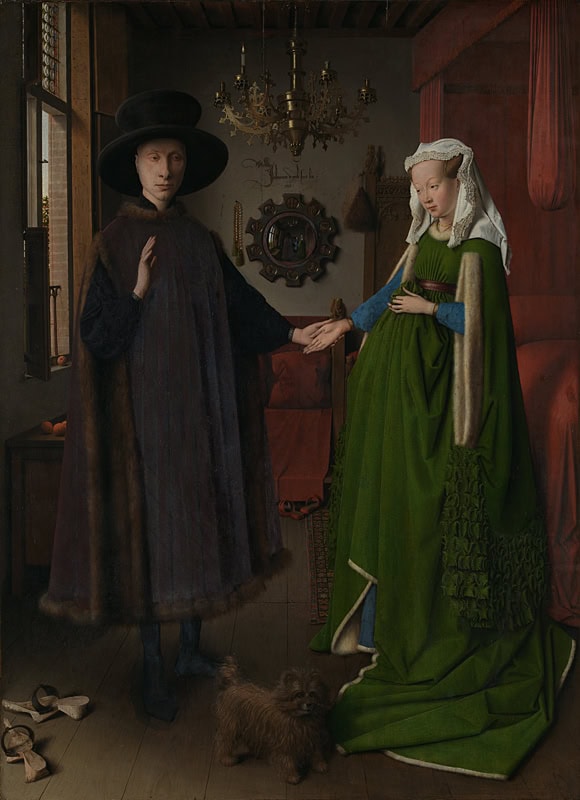
A Woman Bathing in a Stream by Rembrandt
This is such a tender, beautiful painting by Rembrandt, and a bit of a change from his many portraits and self-portraits.
The woman may be Hendrickje Stoffels, who came into Rembrandt’s household to look after his infant son after his first wife, Saskia, died. Hendrickje and Rembrandt became lovers but were unable to marry.
There is a universality about the intimate moment caught in the painting that resonates with anyone who has ever taken off their shoes on a hot day to wade in a cool stream.
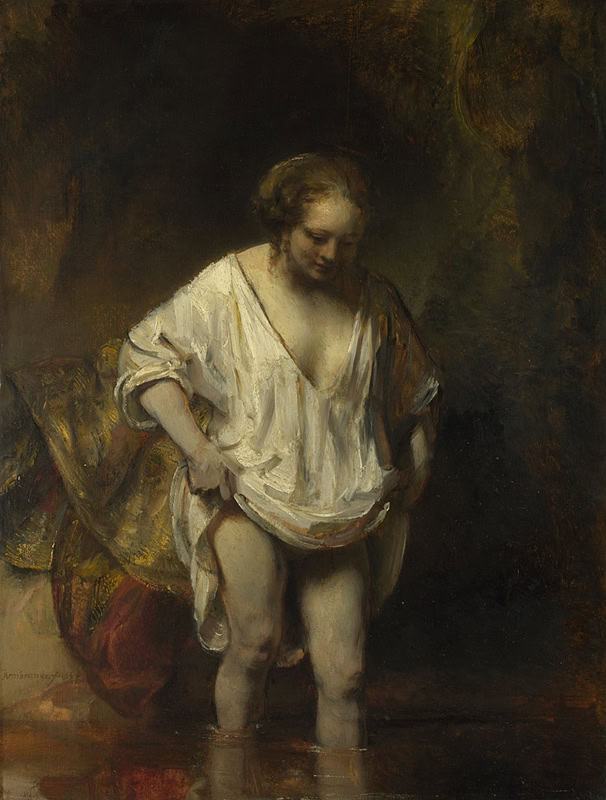
A Young Woman Seated at a Virginal by Johannes Vermeer
The word exquisite always come to mind when I look at a painting by Vermeer.
Detailed and delicate, this painting shows us a moment in time. The young girl is just about to play the virginal, but someone or something has distracted her. Whatever it is, she doesn’t look too thrilled.
One of the ways to appreciate just why Vermeer is considered so great is to look at paintings by his contemporaries. Most depict similar subjects, but you can tell right away that there’s something different about the Vermeers.
The brushwork is finer, the light more skillfully depicted, the backgrounds more perfectly rendered. Vermeer didn’t paint many pieces during his lifetime, but what he did paint was pretty amazing.
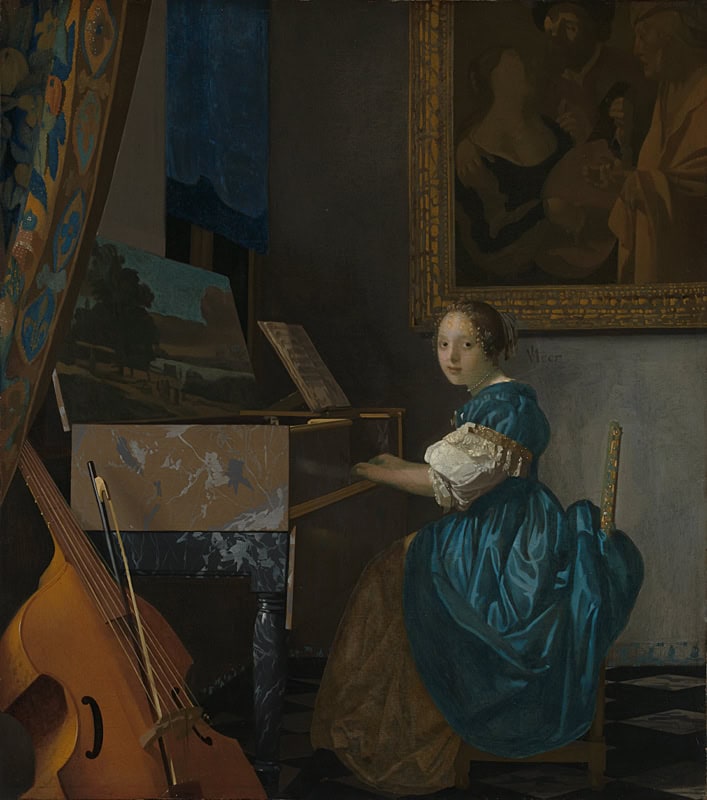
A Boy and A Girl with a Cat and an Eel by Judith Leyster
I was super excited to come across this painting by Judith Leyster, who has been getting more recognition in recent years. The boy and the girl are definitely up to no good!
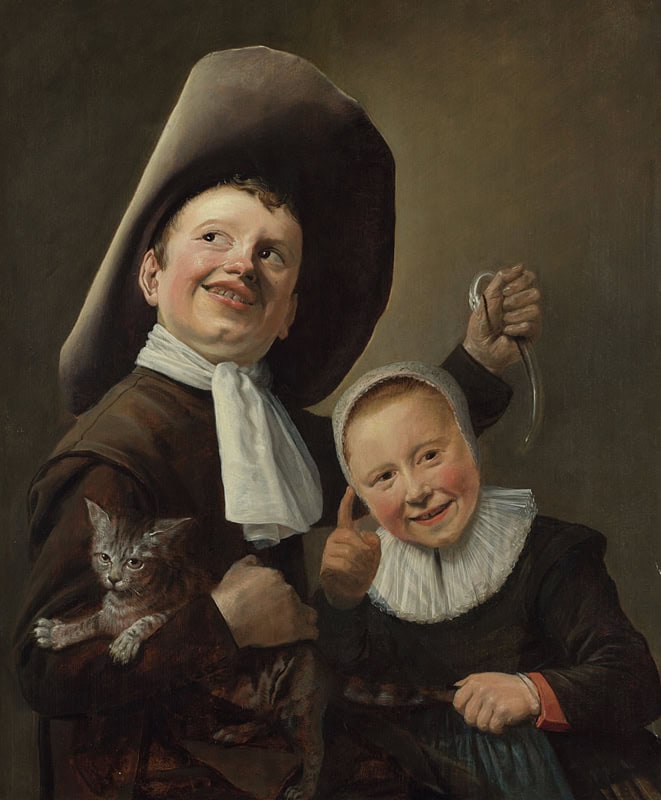
The Four Elements: Air, Earth, Fire, Water by Joachim Beuckelaer
I had never seen these paintings before. They are not particularly famous, but they are interesting. I couldn’t stop looking at them.
Each painting depicts food according to its relationship to one of the four elements.
In the Air painting, birds are being plucked and sold. Some impressive-looking vegetables are on display in the Earth painting. The Fire painting depicts game being butchered and roasted, and finally many different varieties of fish are ready for market in the Water painting.
The expressions on the faces of the people in the paintings are blank and dour. No one looks like they are enjoying themselves!
But the colors and textures of the foods are so incredibly real. They almost look like they are about to spill out of the paintings onto the floor of the gallery.
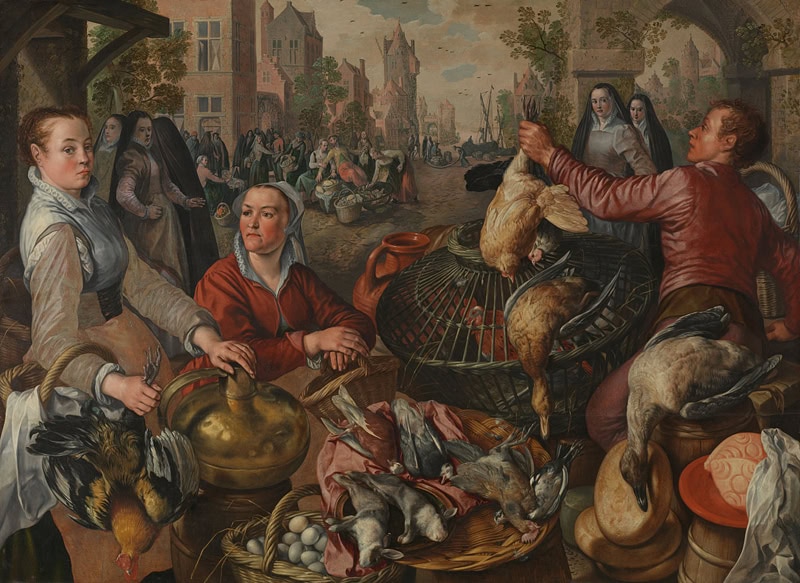
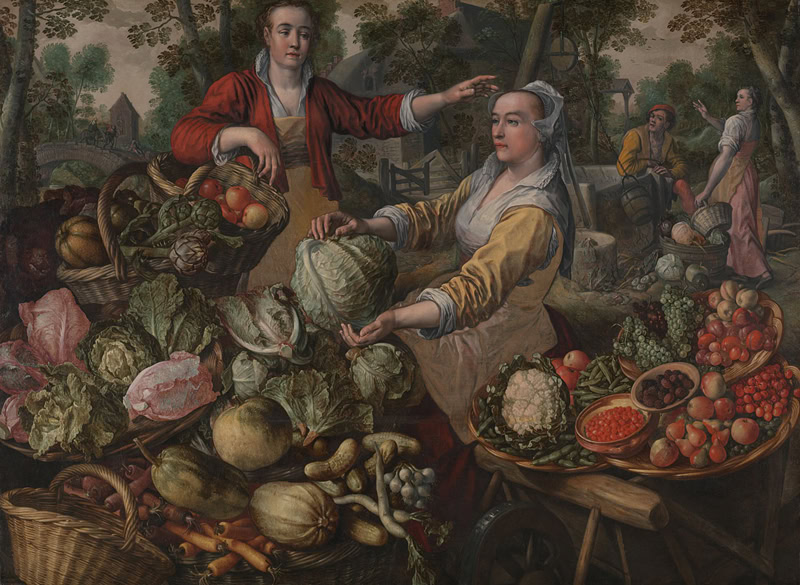
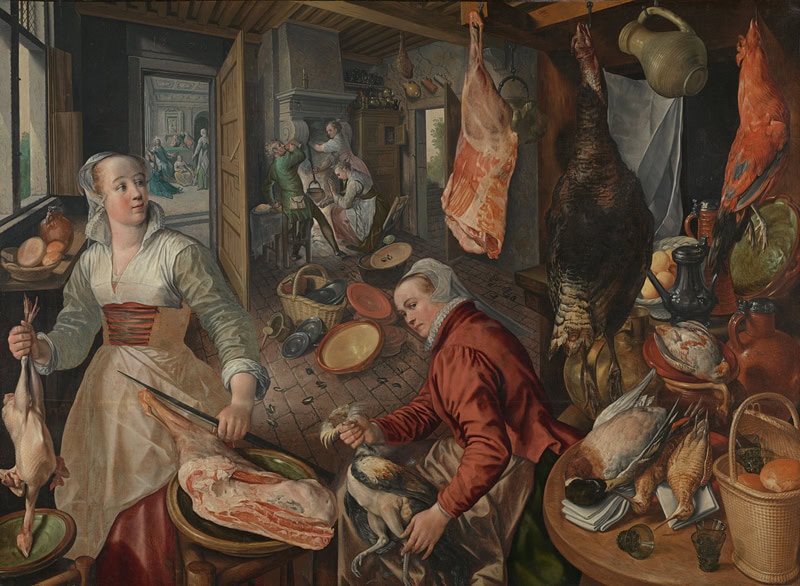
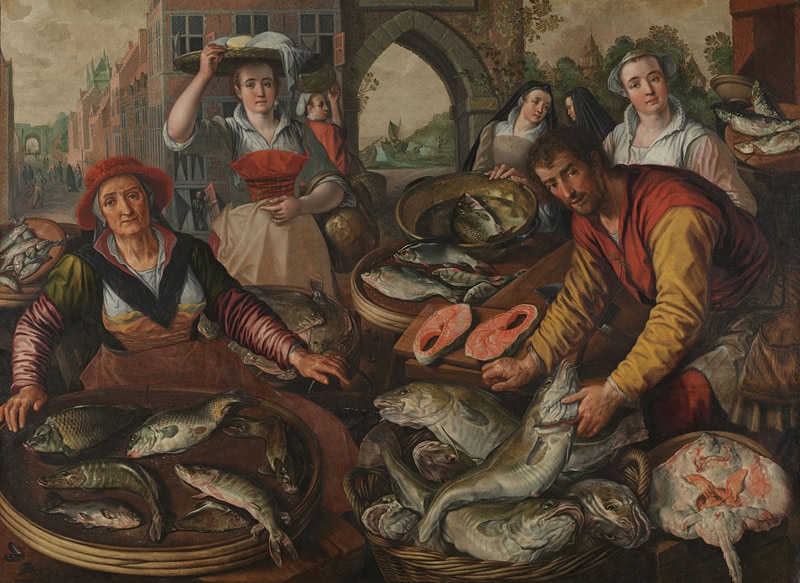
Baroque Paintings at the National Gallery
Boy Bitten by a Lizard by Caravaggio
In a room full of great paintings, I was instantly drawn to this small painting by Caravaggio of a boy being bitten by a lizard.
The expression on his face is so real and so relatable. The painting was completed in Rome in the mid-1590s and was considered innovative for the time. Apparently, it was unusual for a late-16th-century painting to show such a moment of action.
Caravaggio, however, wasn’t worried about following artistic conventions. He painted directly on the canvas from live models
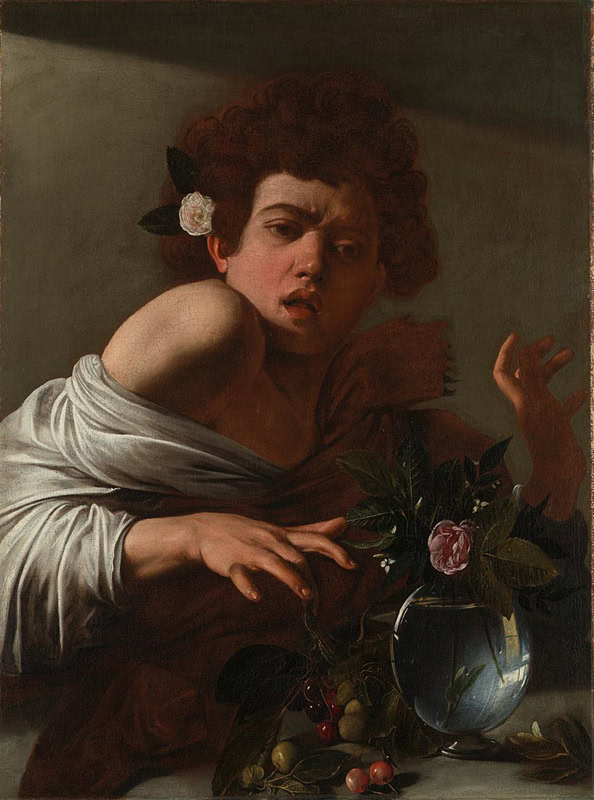
British Painting at the National Gallery
Room 34 at the National Gallery contains some of the most beloved paintings by British artists, including William Turner and John Constable (two of my faves).
The Fighting Temeraire by William Turner
My father bought a print of this painting when he first visited London in the 1960s. It was probably the first real painting I’d ever seen, and I remember loving to look at it when I was a child.
When I saw it again in the National Gallery, I couldn’t help feeling emotional since my father has been gone for several years now and my mother passed quite recently.
Turner’s painting shows the final journey of the Temeraire, a warship that had played a distinguished role in the Battle of Trafalgar in 1805, but by 1838 was ready for the scrap heap.
It’s a poignant scene in its depiction of the age of sail giving way to the age of steam. Turner, of course, was most famous for his depiction of light, which is on full display in the magnificent sunset depicted in the painting.
The painting is one of Turner’s most famous and duly celebrated, but for me it will always remind me of my childhood home.
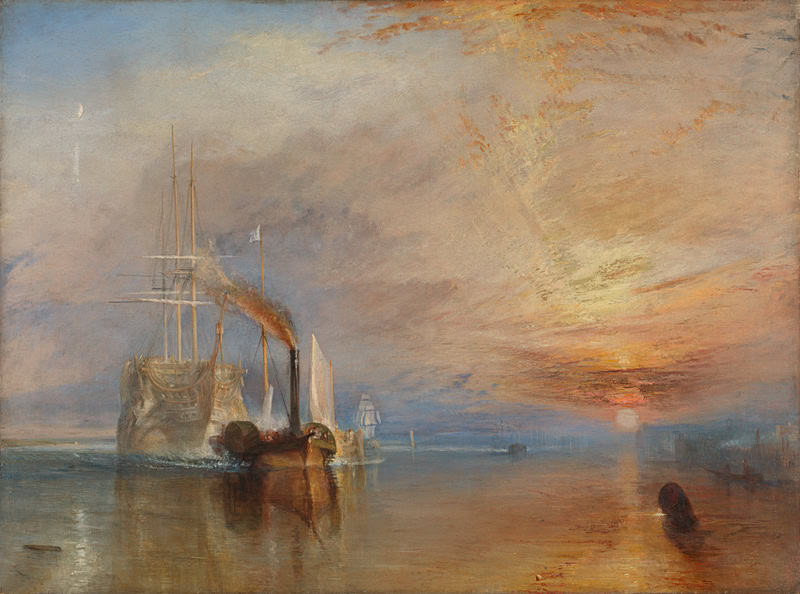
Joseph Mallord William Turner The Fighting Temeraire 1839 Oil on canvas, 90.7 x 121.6 cm Turner Bequest, 1856 NG524 https://www.nationalgallery.org.uk/paintings/NG524
The Hay Wain by John Constable
This bucolic painting by John Constable is one of the most famous British painting. It depicts the millpond at Flatford on the River Stour about about a mile from Constable’s birthplace at East Bergholt, Suffolk.
it really is quintessentially English–an idealized view of the countryside and a time long past. And look at the sky! Constable was a master of clouds.
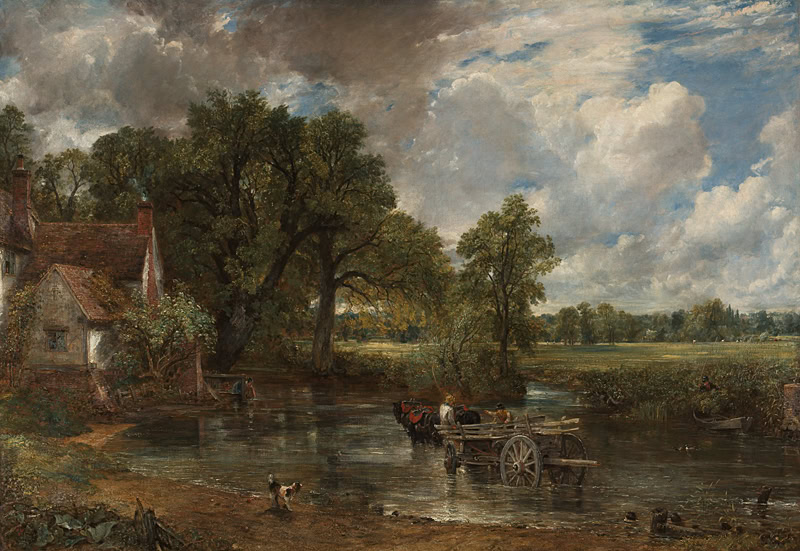
Impressionists and Post-Impressionists at the National Gallery
The rooms displaying paintings by the Impressionists and post-Impressionists are generally mobbed at the National Gallery. So many famous pieces are included!
Stand in the middle of one of the rooms and rotate slowly. If you’re a fan of this era and style of art, you’ll likely recognize just about every piece in the room, from the iconic Sunflowers by van Gogh to the massive painting of The Bathers by Seurat and the sublime waterlilies by Monet.
I’d forgotten just how rich the National Gallery’s collection of French Impressionists is and spent my first few minutes in the rooms exclaiming (to myself), they have that? and that one? oh, my, and that one too? This is incredible!
I had to sit down a few times just to collect myself. I’ve picked out four of my favorites (but it was a tough choice).
Waterlilies by Monet
This luscious painting dominates one entire wall and is hard to get a full-on look at thanks to the throngs of like-minded visitors standing in front of it.
This piece is one that was not included in the collection of large waterlily paintings in Musėe de l’Orangerie in Paris (check out my round-up of Nine of the Best Small Museums in Paris for more about the Monets in the Orangerie).
The waterlily paintings in the Orangerie include details of trees and foliage that anchor the viewer and give them a sense of location. But this painting in the National Gallery is completely free-flowing.
You have no idea where in the pond you are; you’re immersed in a shimmering world of greens and pinks and purples. No photograph can do it justice; you need to stand in front of the real thing and just drink it in.
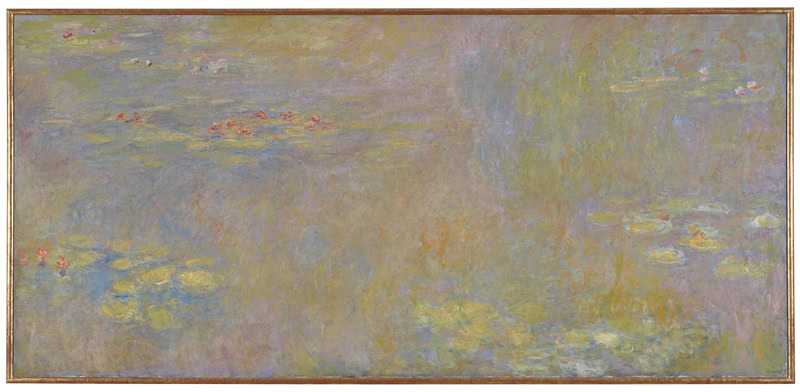
Sunflowers by Vincent van Gogh
This cheerful painting of sunflowers exuberantly clumped together in a plain vase signed by “Vincent” is probably the most famous of van Gogh’s works. It appears on a dizzying array of merchandise in the gift shop, from mugs to cards to t-shirts to umbrellas.
Why is this painting so famous? I think because it looks like sunshine on canvas. The varying shades of yellow and gold that van Gogh uses perfectly capture the feeling of a hot day in late summer when some sunflowers are still in bloom, others have just passed their peak and are starting to wilt, and still others have lost their petals completely.
This version of Sunflowers is one of five, the other four being on display in art museums around the world including the Van Gogh Museum in Amsterdam (always worth a visit!).
Apparently, van Gogh made the paintings to decorate his house in Arles in preparation for a visit from fellow artist Paul Gauguin.
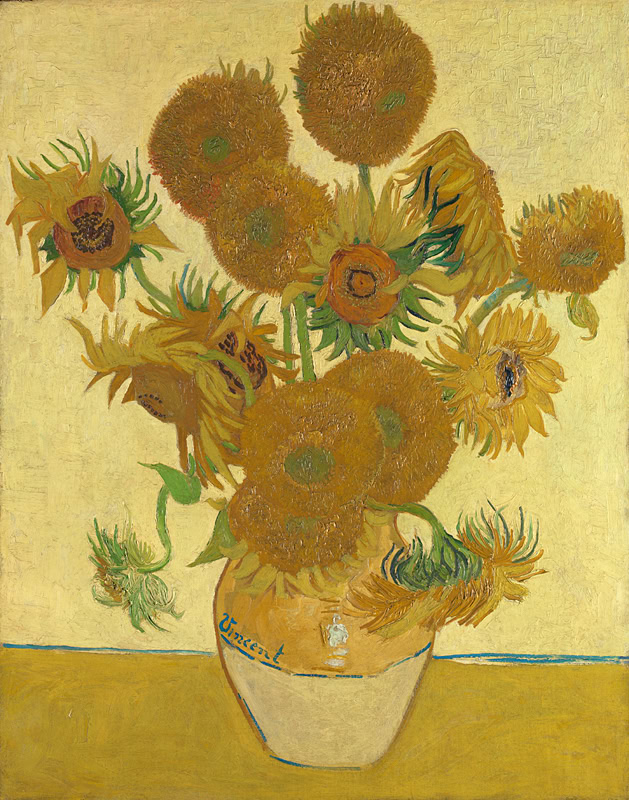
Bathers at Asnières by Georges Seurat
The painting depicts regular people enjoying a day off on the banks of the Seine, the factories they work in visible in the distance, their focus on the feel of warm grass and cool water.
It’s a snapshot in time. Each person is immersed in his own thoughts; each is alone, the exhaustion of a week at work still heavy on their shoulders even on their day off.
This massive painting is famous for its use of pointillism and was Seurat’s first major composition. He painted it at the age of 24 to make his mark at the official Salon in the spring of 1884. Unfortunately, the painting was rejected!
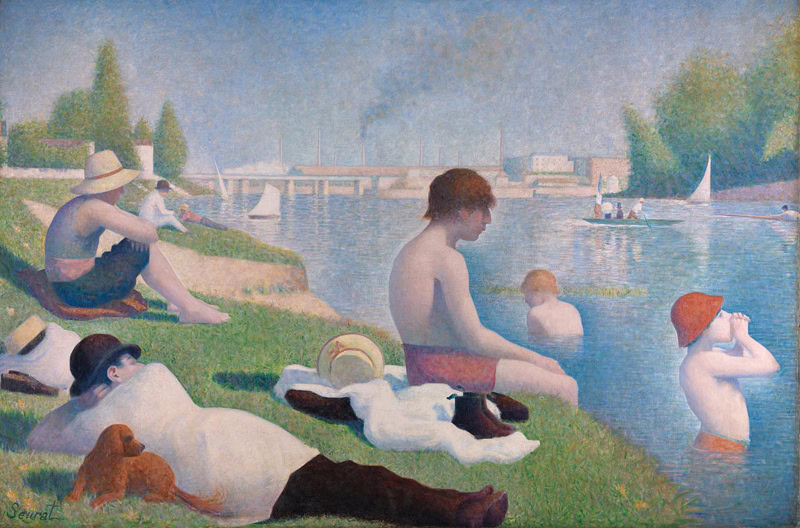
Surprised! by Rousseau
This painting by Rousseau was new to me, and I just loved it!
Look at the expression on the tiger’s face! Has he been frightened by the flashes of lightning and the sudden wind blowing the jungle foliage all over the place? Who knows? But it’s such a wonderfully lush moment.
Surprised! was the first of about 20 jungle paintings that Rousseau produced. His jungles are entirely imaginary; Rousseau never left France.
He was an amateur artist who faced a fair bit of ridicule from the art establishment, but now Rousseau is considered a pioneer of “naïve art.”
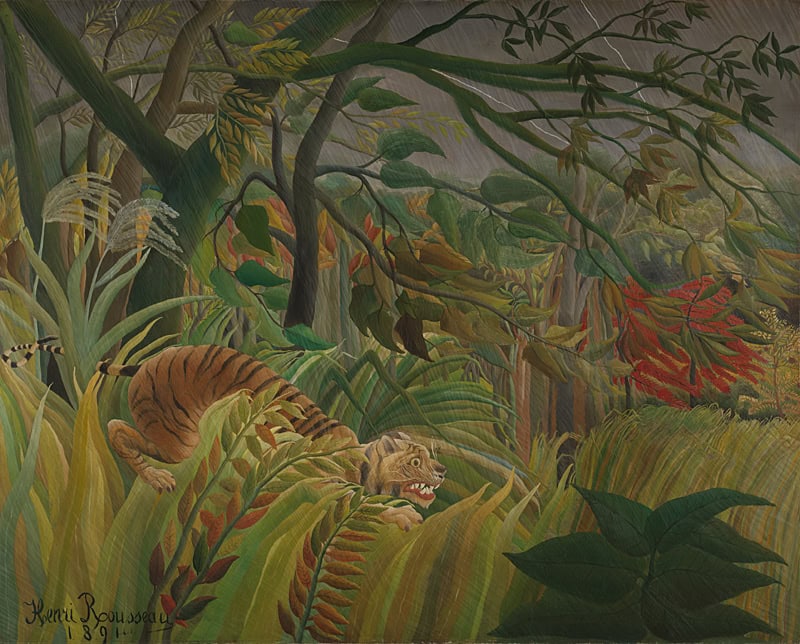
Visiting the National Gallery
The National Gallery is open daily from 10 am to 6 pm and on Fridays until 9 pm. It’s located on Trafalgar Square in central London and entry is free, although donations are welcomed.
To get to the National Gallery, hop on the tube and get off at either Charing Cross or Leicester Square.
Eating at the National Gallery
The eateries at the National Gallery include. Ochre is an upscale cocktail bar open for lunch through dinner where you can also partake of the Ochre Afternoon Tea (served daily from 3 to 4:30 pm). For a quick bite, check out Muriel’s Kitchen, a self-serve café offering a casual menu.
Shopping at the National Gallery
You’ll find two shops full of all the postcards, art souvenirs, and high quality prints you could want. Every purchase made at the gift shop raises money to maintain the National Gallery.
Tours of the National Gallery
Every so often, I spring for a guided tour of an art museum and I’m never disappointed. Here’s a guided National Gallery highlights tour that includes afternoon tea (how very British!).
Staying in London
Although London is not very budget-friendly, I’ve usually managed to find good places to stay right in the center of the action.
On my latest trip to London, I stayed at the Park Plaza Victoria London Hotel, a well-located and excellent deal for a modern, four-star hotel in the heart of London.
The Wilde ApartHotel just off the Strand is within walking distance of the National Gallery and also most of the West End theaters.
Conclusion
Have you visited the National Gallery? What are some of your favorites? Share in the Comments below. Want more posts about art museums? Here are some posts about great art museums in Europe that I’ve visited and recommend:
